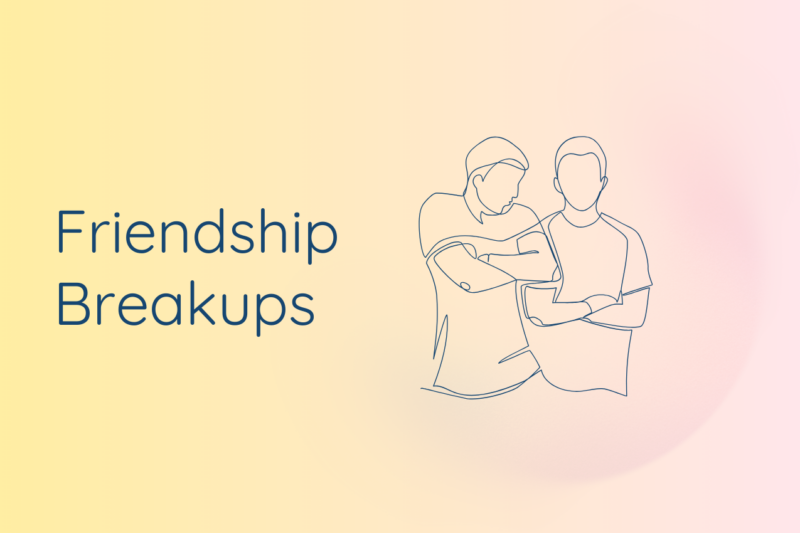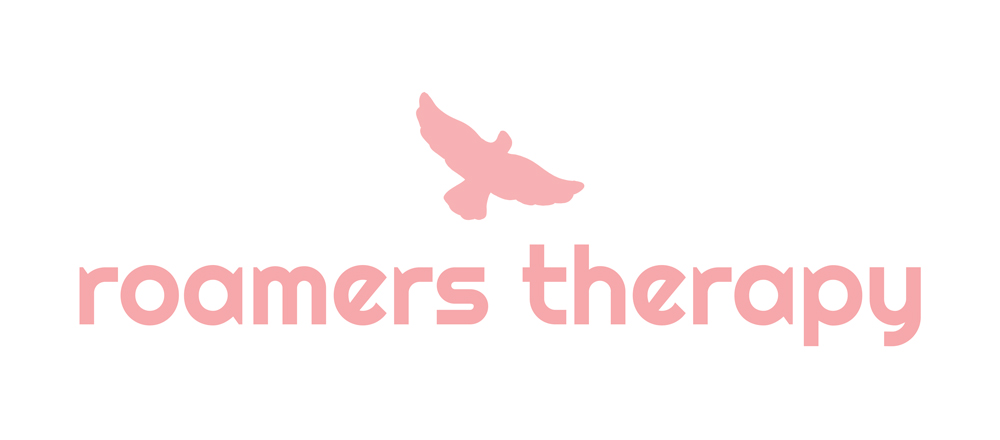Friendship Breakups
Roamers Therapy I May 2024

Relationships are hard work, and breakups are difficult. However, breakups are not just for romantic relationships. One of the most overlooked types of breakup is a friendship breakup. Research shows that we lose half of the members of our friendship networks every seven years. This means that we will go through many friendship breakups in our lifetime. Friendship breakups often go under the radar because, as a society, we are taught that friendships come and go and that they are not as important or meaningful as romantic relationships and partnerships. However, friendship breakups are as hard as romantic relationships. In this therapy sketch, we will discuss the effects of friendship breakups.
Friendships
Humans are social beings. Even if we want to rest and be alone from time to time, we are essentially concerned about loneliness. Friendship is a relationship that involves emotional bonds and is enriched by elements such as sharing, communication, interaction, and entertainment. Friendships give the individual a sense of belonging, enable one to receive help and support, give one a sense of worthiness, support the personality, and give one the opportunity to help others.
Friendships show different characteristics according to age periods. In the first years of primary school, group friendships are frequent, and girls and boys are included in groups of their own peers. Towards the end of primary school, the groups dissolve, the number of friends decreases, and the quality of the relationship becomes more important. In adolescent friendships, personality traits such as honesty, goodwill, sharing, sincerity, helpfulness, confidentiality, and trustworthiness come to the fore. Most adolescents prefer to be friends with peers who have similar characteristics, values, and habits. But how does the concept of friendship in adulthood take place?
Although our friendships seem to accumulate cumulatively for a while, it is observed that the number of friends decreases, especially in early adulthood and midlife. Even though we all wish that the friends we grew up with and dreamed of together would last a lifetime, it is also important to realize that as we grow, develop, and change, our friends and the relationships we build with them evolve over time. This can cause friendships to part ways from time to time however, how these friendships end plays as important a role in our lives as how they begin.
Friendships vs. Romantic Relationships
We are taught that we can always make new friends and not necessarily make new partnerships. This is reinforced through socialization, institutionalization, and policies. For instance, many would not consider going through couples or relational therapy for a friendship. There is no legal union like marriage for friendships; we cannot add friends to our benefits, and for some, it can be uncomfortable for them to tell their friends they love them.
Despite the ways in which we are trained to overlook friendships and friendship breakups, friendship breakups are incredibly painful and can be even more painful than romantic relationship breakups. Friendships are an important means of survival and support. For some people, friendships are their first love attachments and relationships they have fostered. These relationships have been a strength and support for us throughout life, and without this support, navigating hurt and healing can be challenging.
Friendship Breakups
There are different forms of relationship breakups, including the fallout, the slow burn, and the ghosting.
- The fallout happens when a major conflict ruptures the relationship. This may end in a fight; ultimately, people decide not to be friends anymore.
- Friendships might end up ghosting one another. This is when one or all parties stop communicating or reaching out to one another. This may be abrupt (e.g., after a conflict) or a slow burn that dwindles. In any case, this can be frustrating, painful, anxiety-inducing, and confusing for all parties involved.
- The slow burn happens when people experience distance in the relationship that, over time, can lead to the dissolution of the relationship. This distance can be due to conflict, life circumstances (e.g., marriage, move, a baby, a new job), personal circumstances (e.g., stress, depression, health), or growing apart (e.g., becoming different people, developing different values). When this happens, all parties may be able to tell that things are not the same but may choose not to intervene. Perhaps they believe things will be okay, maybe scared to address them, or may not have the energy or desire to do anything.
Preventing Friendship Breakups
Like everything in life, preventing friendship breakups is easier than intervening. We prevent friendship breakups by recognizing that friendships (like all relationships) involve hard work. Setting and maintaining boundaries can help navigate friendships and prevent breakups. Boundaries are healthy limits we set for ourselves in all relationships. Understanding and communicating our needs and expectations for friendships is also helpful. This can include how often we spend time together or how we like to communicate.
Adopting a mutual and reciprocal perspective can help with equity in friendships. It is important to recognize that relationships are typically not 50/50, there will be times when we have to give more effort. Lastly, one of the most helpful ways to prevent friendship breakups is how we handle conflict. Like all relationships, it is important that we communicate all conflict with our friends and that we see conflict and vulnerability as a way of growth and repair. It is possible to come back together and makeup with friends, but it is important to recognize what dynamics led to the breakup in the first place so that the dynamics do not persist.
How to Deal with Friendship Breakups
If you are dealing with a friendship breakup, it is really important to take care of yourself. Here are some ways to manage a friendship breakup.
- First, recognize this breakup as a grief and an impactful experience.
- Second, give yourself grace. Relationships take more than one person to do work, and breakups are almost never the sole responsibility of one person.
- Third, practice self-care and do things that center you, such as a hobby, reading, exercising, journaling, or practicing mindfulness.
- Fourth, reach out to the friends you do have for support. Finally, you can always turn to therapy to support the grief you are experiencing from the breakup. Remember, friendship breakups are real, and they suck. Give yourself time and space to heal.
In short, friends are important social supports. However, as we grow and change and environmental factors intervene, friendships can become damaged and broken. This can lead to the end of friendships. The end can take the form of fallout, ghosting, and slow burn. Either way, these endings can hurt just as much as romantic breakups. Taking time for yourself, practicing self-care, and utilizing other social supports can make this process easier, but seeking help from a mental health professional can help if you are struggling to cope.
At Roamers Therapy, our psychotherapists are here to support you through anxiety, depression, trauma and relationship issues, race-ethnicity issues, LGBTQIA+ issues, ADHD, Autism, or any challenges you encounter. Our psychotherapists are trained in Cognitive Behavioral Therapy, Dialectical Behavioral Therapy, Psychodynamic Therapy, Acceptance, and Commitment Therapy, Person-Centered Therapy, and Gottman Therapy.
Whether you’re seeking guidance on a specific issue or need help navigating difficult emotions, we’re ready to assist you every step of the way.
Contact us today to learn more about our services and schedule a session with our mental health professionals to begin your healing journey. To get started with therapy, visit our booking page.
First, decide if you’ll be paying out-of-pocket or using insurance. If you’re a self-pay client, you can book directly through the “Book Now” page or fill out the “Self-Pay/Out-of-network Inquiry Form.” If you’re using insurance, fill out the “Insurance Verification Form” to receive details about your costs and availability. Please let us know your preferred therapist. If your preferred therapist isn’t available, you can join the waitlist by emailing us. Once your appointment is confirmed, you’ll receive intake documents to complete before your first session.
This page is also part of the Roamers Therapy Glossary; a collection of mental-health related definitions that are written by our therapists.
While our offices are currently located at the South Loop neighborhood of Downtown Chicago, Illinois, we also welcome and serve clients for online therapy from anywhere in Illinois and Washington, D.C. Clients from the Chicagoland area may choose in-office or online therapy and usually commute from surrounding areas such as River North, West Loop, Gold Coast, Old Town, Lincoln Park, Lake View, Rogers Park, Logan Square, Pilsen, Bridgeport, Little Village, Bronzeville, South Shore, Hyde Park, Back of the Yards, Wicker Park, Bucktown and many more. You can visit our contact page to access detailed information on our office location.
